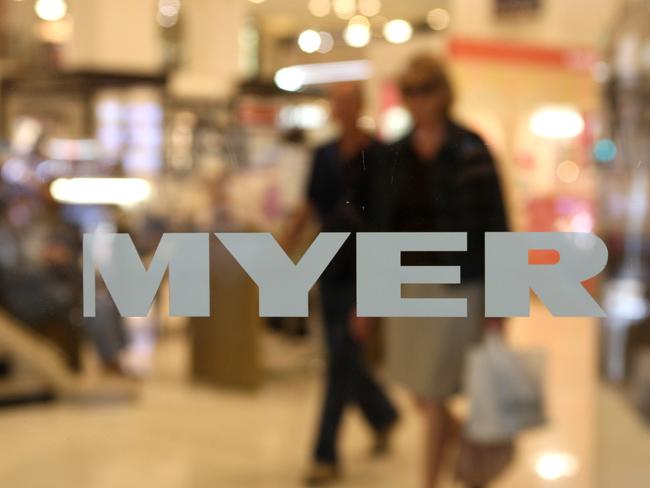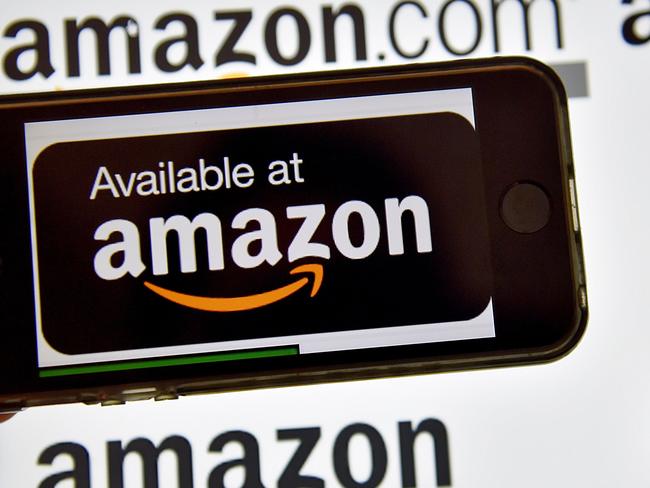When landlords attack? Westfield’s $3.3 billion incentive to ‘crush’ Myer in deadly pincer move
WINTER is coming for Myer. And just like Game of Thrones, the department store may be betrayed by those closest to it.
MYER is likely to be face a deadly “pincer move” in the not-too-distant future in part orchestrated by the embattled department store’s own landlord, an equities analyst has warned.
Daniel Mueller from Vertium Asset Management has likened Myer’s situation — and potential competition from Westfield owner Scentre Group — to that of struggling US retailer Sears and its relationship with Seritage Growth Properties, the real estate spin-off of Sears Holdings.
“Like Myer, Sears has been struggling in recent years,” Mr Mueller said.
“If not for several loans from billionaire CEO Eddie Lampert, it may not be around today. Sears’ share price has declined 92 per cent over the past four years, with the company being unprofitable since 2012. In that time, sales have halved and store numbers have dropped from just over 4000 to under 1500.
“Surely this would be a major negative for Seritage? Not so fast. The more unprofitable Sears becomes, the easier it is for Seritage to reposition its properties from the anchor tenant to other retailers willing to pay substantially higher rent.”
Myer’s profits and share price have steadily declined since relisting on the stock market in 2009. Turmoil at the company has dominated headlines for the past few months, with billionaire investor Solomon Lew agitating for a board spill and CEO Richard Umbers being shown the door amid falling sales.

Like Sears and Seritage, Myer is the “anchor” tenant of the flagship Sydney CBD building, which Scentre purchased from and then leased back to Myer in 2003 under a favourable long-term arrangement, running for 20 years with six 10-year options.
“Myer’s decline has created a conundrum for Scentre,” Mr Mueller said.
“An anchor tenant enjoying favourable rents with a poor retail proposition is not what a retail landlord wants. If Scentre can reposition Myer’s floorspace, especially in its Westfield Sydney location, the valuation uplift would be significant.
“Based on the rental income Scentre receives from specialty retailers versus Myer, it would be in Scentre’s interest to replace Myer with more profitable tenants. And why not? Its business model for the last 50 years is based on replacing weaker retailers with stronger ones.”
He calculates that the Myer Sydney City store generates about $729 million in retail sales, while replacing Myer’s 46,754 square metres of floorspace with specialty retailers could generate $1.04 billion in sales.
Myer currently pays 7 per cent of its revenue in rental, compared with specialty retailers which are willing to pay 18 per cent. In other words, the rental from Myer’s Sydney floor space could increase from $51 million to $187 million.
“The increase in rent of $136 million based on Scentre’s latest Sydney CBD capitalisation rate of 4.12 per cent implies a $3.3 billion valuation uplift,” he said.
“This represents about 16 per cent of Scentre’s current market capitalisation ... Scentre can’t force Myer to vacate on its own. It needs help. And that help is a multi-pronged pincer move that will likely crush Myer.”
Mr Mueller said a “crucial” piece of the puzzle only became apparent recently with Scentre Group’s 2016 purchase of the iconic David Jones building on Market Street in Sydney’s CBD for $360 million.
Scentre Group, in a joint-venture with industry super fund Cbus, announced plans to refurbish the 10-storey heritage building and add 22 storeys of apartments. At the same time, David Jones is putting aside $200 million from that sale to renovate its adjacent Elizabeth Street store, just around the corner from Myer.

Meanwhile, the threat of Amazon is growing. Since its lacklustre launch in December which was largely panned by shoppers and derided by retail competitors, Amazon has doubled its product offering and this week rolled out its much-awaited Fulfilment by Amazon service for Marketplace sellers.
Analysts from Morgan Stanley this week said prices on Amazon were now significantly cheaper than major retailers, with the average differential on sports, electronics and apparel now standing at 16 per cent, 11 per cent and 17 per cent respectively.
At launch, Amazon was just 1 per cent cheaper in sports and was more expensive in electronics and apparel — 13 per cent and 3 per cent respectively — according to the Morgan Stanley analysis, reported by Business Insider.
“Between Amazon’s entry into Australia and Scentre’s acquisition of the David Jones building, we have just seen the first shots fired,” Mr Mueller said.
The combined effect of these three “pincers” — Amazon, the Market Street redevelopment and the David Jones refurbishment — could materially impact sales at Myer’s crucial Sydney flagship store, which last year accounted for 23 per cent of its total revenue.
And Myer, he points out, is already “flying close” to its debt covenants. “In particular, its fixed charge cover (earnings before rent / interest expense + rent) would be most at risk of a breach,” he said.
He calculates that a 10 per cent ($73 million) decline in sales at Sydney City would put Myer on the cusp of breaching its fixed-charge covenant, while a 20 per cent ($146 million) decline would “almost certainly” require it to raise fresh equity.
“The plights of Sears and Myer have striking parallels as both embark on a path of survival,” he said. “But while the threats to Sears are well known, the risks to Myer are growing. Sears is well down the path, whereas Myer is about to face the biggest challenge in its corporate life.”
Scentre Group and Myer declined to comment.




